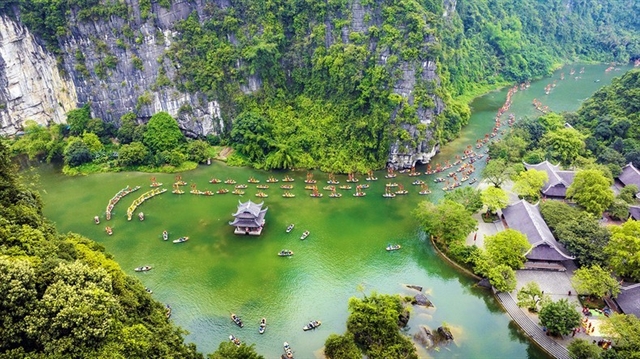 Life & Style
Life & Style


|
| Connecting Hà Nam, Ninh Bình, and Nam Định could create a distinctive circuit of cultural and spiritual heritage. Photo vietnamtourism.vn |
HCM CITY — The reorganisation of administrative units is not merely a matter of streamlining government structures, it presents a chance to reshape the development of tourism.
According to Phạm Hải Quỳnh, a community tourism expert, the new spatial configurations resulting from provincial mergers are key to developing sustainable and distinctive tourism products, while also preserving culture and the environment.
For instance, linking the majestic landscapes of Hà Giang with the revolutionary heritage of Tuyên Quang can create a continuous, engaging experience that appeals to both domestic and international travellers.
As visitor demand grows, both localities will be encouraged to improve infrastructure, services, and accommodation to better meet expectations.
Tourism development also creates jobs, boosts local incomes, and supports related sectors such as gastronomy and handicrafts, contributing to regional economic growth.
Likewise, linking Hà Nam, Ninh Bình, and Nam Định can form a unique cultural and spiritual heritage circuit, expanding Northern Việt Nam’s tourism footprint and establishing a tourism growth triangle that could evolve into a national and even international centre.
However, many experts have also raised concerns. Connecting diverse tourism regions requires synchronised planning, promotion, and infrastructure investment.
One major concern is that the names of well-known destinations might fade after the mergers, weakening their tourism brand recognition.
Vũ Quốc Trí, general secretary of the Việt Nam Tourism Association, emphasised that changing administrative names does not mean destinations will disappear.
“In reality, these places still exist on the tourism map, regardless of their new provincial affiliations. Name changes are just the beginning. What truly matters is how we reposition and promote these destinations while preserving their identity,” he said.
“The reorganisation offers an opportunity for localities to rethink their development models, reassess their strengths, and build cross-regional tourism products. Expanding development space in this way will help create longer, more diverse tours that connect different cultural regions and tourism types,” said Phan Linh Chi, deputy director of the Việt Nam National Authority of Tourism.
Enterprises as key drivers
A major concern following the mergers is how to coordinate tourism planning and establish a unified brand for newly formed regions.
Each province has its own tourism identity and signature destinations.
Dr. Trịnh Lê Anh, lecturer at the University of Social Sciences and Humanities, Việt Nam National University Hà Nội, stressed: “What’s essential is distinguishing between administrative names and destination brands.”
Many popular tourist destinations, such as Sa Pa, Mộc Châu, and Cát Bà, thrive despite having names different from their provincial hosts.
The key lies in consistent communication strategies, a clear legal framework, and long-term planning that treats destination branding as an independent entity.
Nguyễn Châu Á, CEO of Oxalis Adventure and Oxalis Holiday, noted that changes in administrative names after mergers are unlikely to significantly impact current tourism activities.
“What matters in tourism is not the administrative title but the real appeal of the destination and how well it's branded and marketed to travellers,” he said.
Destination brands like Sơn Đoòng and Tú Làn already enjoy global recognition and operate independently of provincial borders.
If the mergers are handled properly, rather than diminishing destination value, they could create new opportunities to enhance connectivity and expand tourism spaces.
“It’s not the name that matters. It’s the branding and communication strategy. As long as we preserve local identity, deliver quality experiences, and carry out professional communication, travellers will keep coming,” Á affirmed.
Associate Professor Dr. Trần Đình Thiên, former Director of the Việt Nam Institute of Economics, believes that if reorganised effectively, provinces such as Hà Nam, Nam Định, and Ninh Bình could form a new growth pole, leveraging their combined strengths in ecological, historical, and spiritual tourism.
However, this will require a long-term strategy and a leading role for businesses in close coordination with local authorities, he said. VNS




